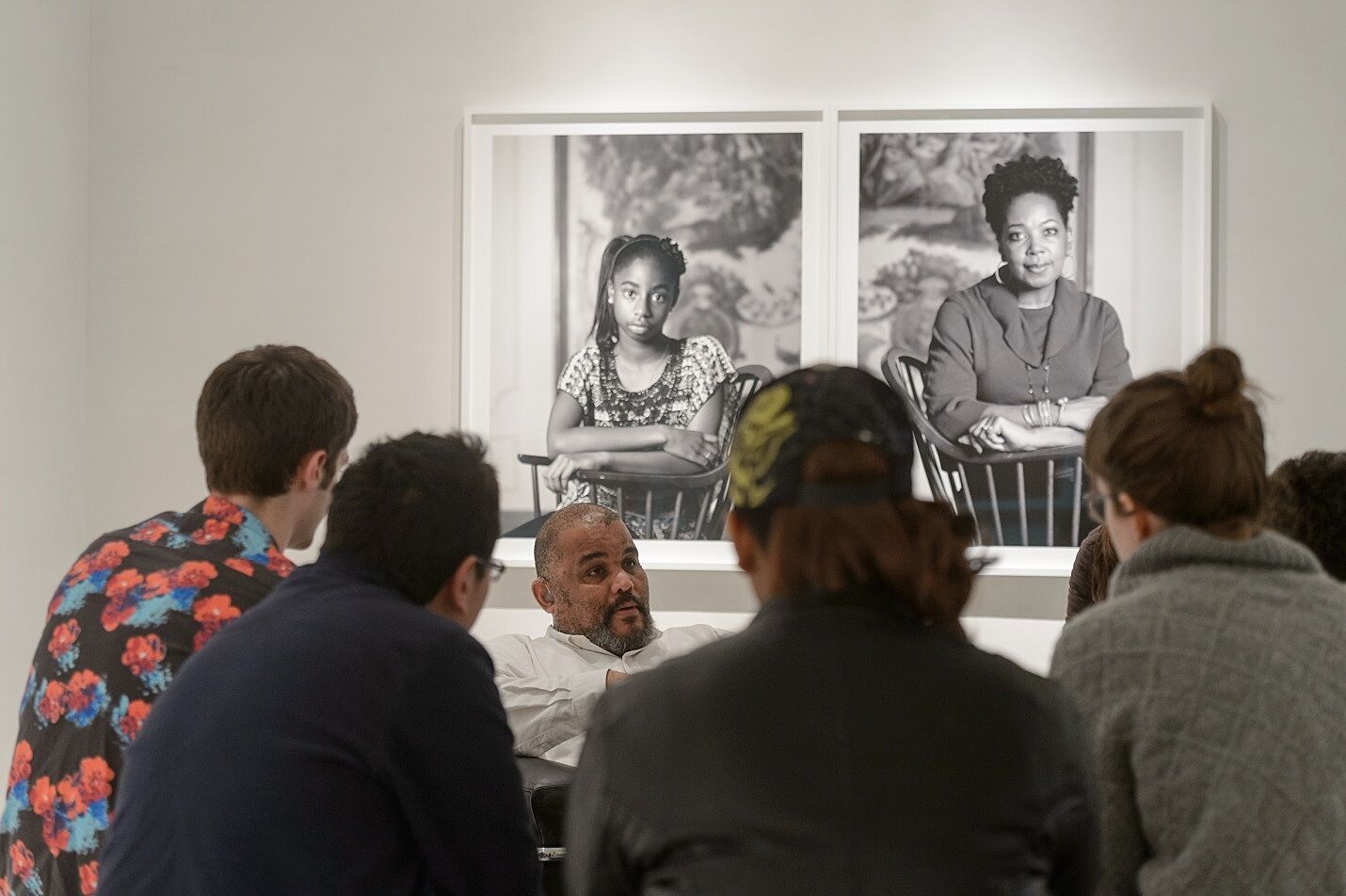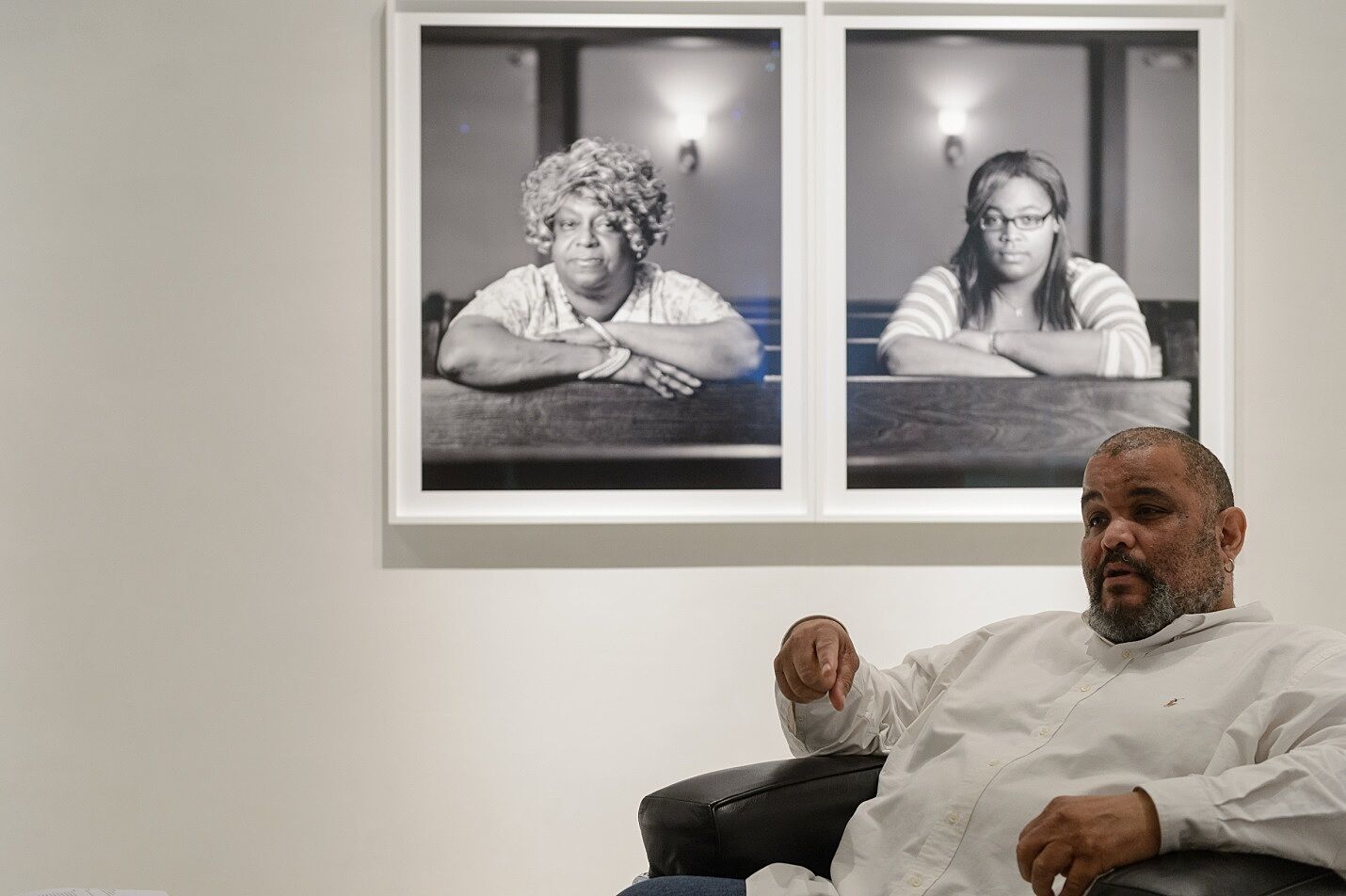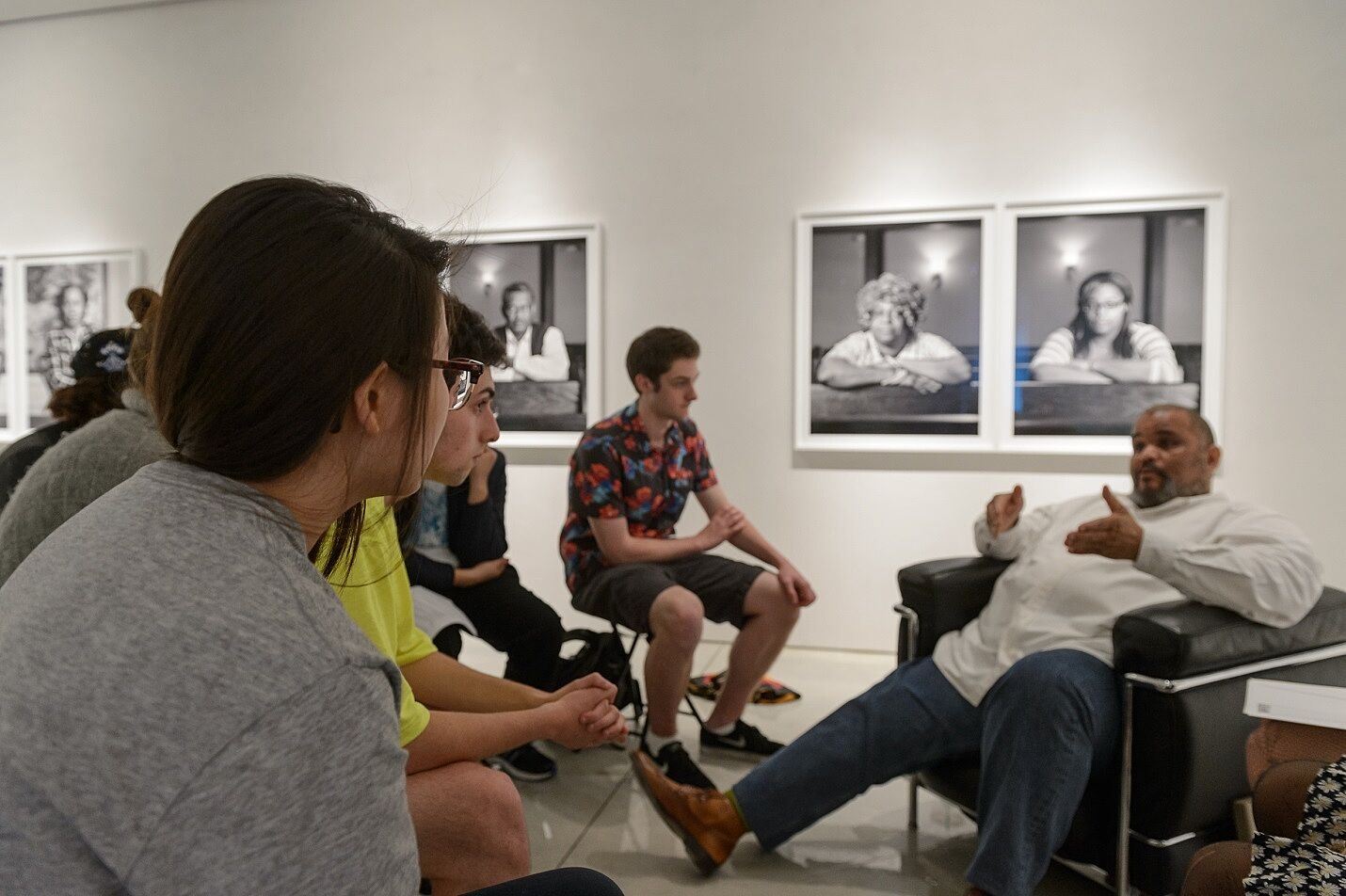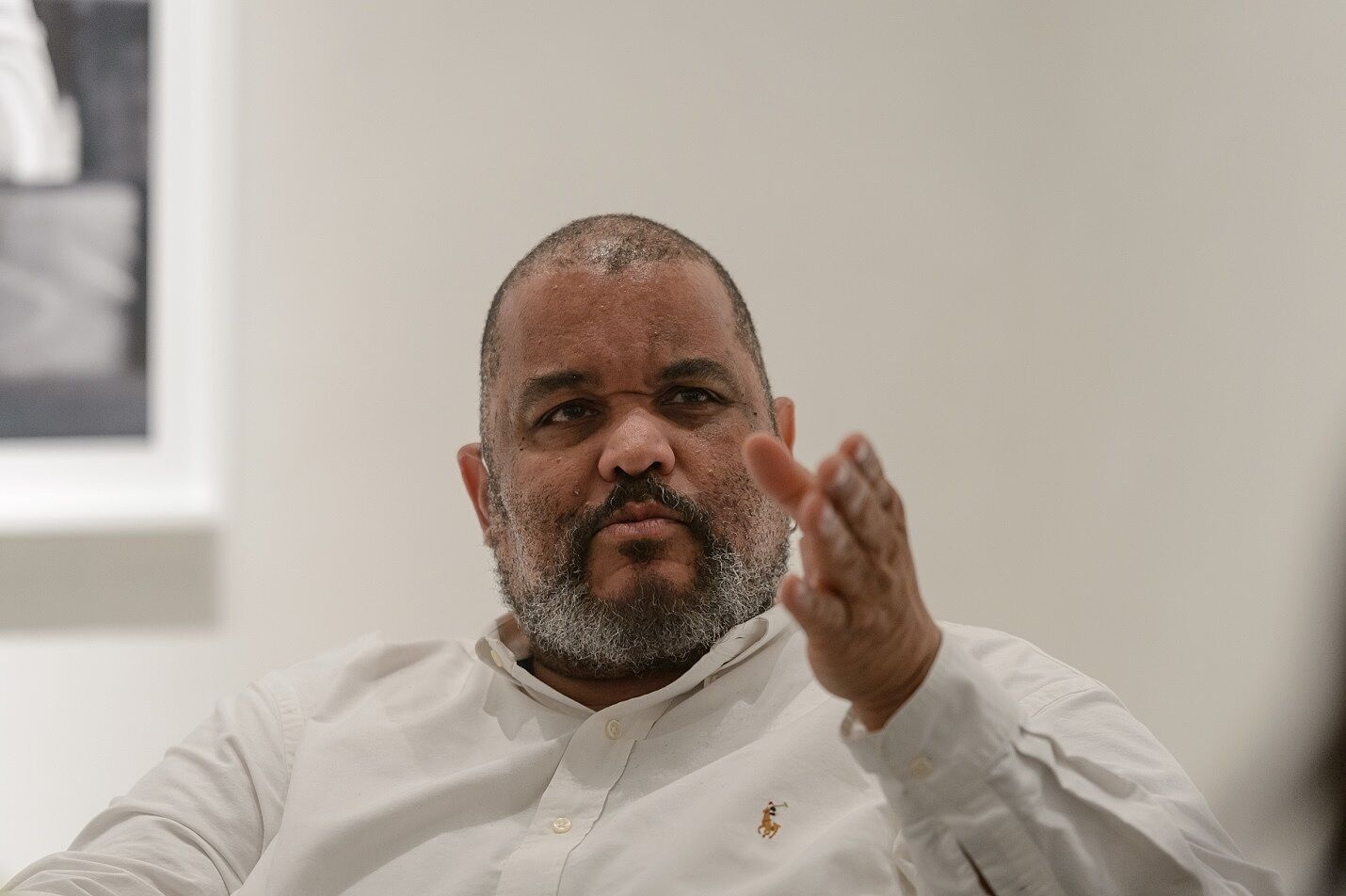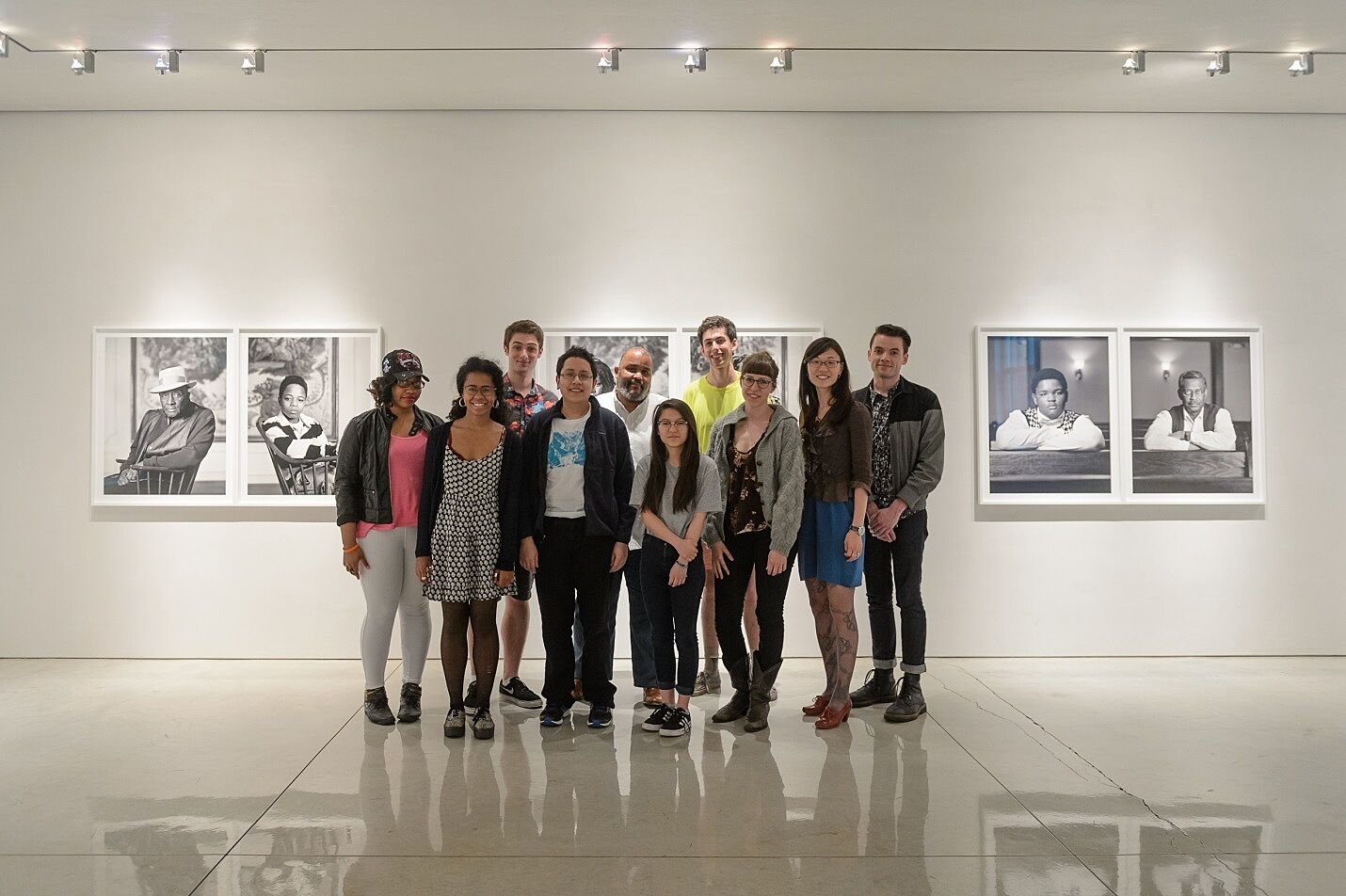A Conversation with Dawoud Bey
May 23, 2014
On Friday, May 23, Youth Insights Leaders met 2014 Biennial artist Dawoud Bey to speak with him about his work and career. In the weeks leading up to the visit, Leaders had explored Bey’s work on view in the Biennial exhibition: Barack Obama (2008) and two diptychs from his recent The Birmingham Project (2012). It was a terrific chance to learn more about his work from the artist himself and to see the rest of The Birmingham Project portraits, on view at the Mary Boone Gallery in Chelsea.
At the gallery, YI Leaders gathered in a quiet corner, and Bey settled into an armchair to greet them. He asked for their names, schools, and artistic interests, then told the story of his own journey to becoming a successful artist. It was the controversy over the Metropolitan Museum’s exhibition Harlem on My Mind, in 1969—over the fact that the exhibition excluded all work by actual Harlem artists and residents—that first drew him to the museum as a curious teenager. Bey explained that he might never have been curious enough to go to the museum without the expectation of a protest. But when he got there, seeing the photographs inspired him to take his own photographs of Harlem, using a camera he had inherited from his godfather. Bey emphasized the importance of getting to know the citizens of Harlem before he photographed them, and of making the final photographs accessible and visible to the people they portrayed—a conviction that has shaped much of his later work, including The Birmingham Project.
Bey also spoke to the Leaders about his inspiration for The Birmingham Project—his desire to make a work about the 1963 16th Street Baptist Church bombings in Birmingham and the related acts of violence that killed six young people in all. Bey gave a striking account of the violence that led to the deaths of two young teenage boys, Johnny Robinson and Virgil Ware. For many of those listening it was a new piece of history, and Bey conveyed it with power and empathy. He also told his own story of working with the Birmingham community to create the project, describing how he got to know community leaders who helped him find subjects to photograph.
Bey answered questions from the Leaders and shared some of his secrets about how he gets people to pose for him in a natural way. He even demonstrated the technique on a few Leaders! He ended the session by stepping around to the other side of the camera and posing for a group photograph with YI. It was an amazing session, and an honor to be able to hear so candidly from the artist. Special thanks to Mary Boone Gallery and Dawoud Bey for the opportunity!
By Correna Cohen, Youth Programs Fellow

